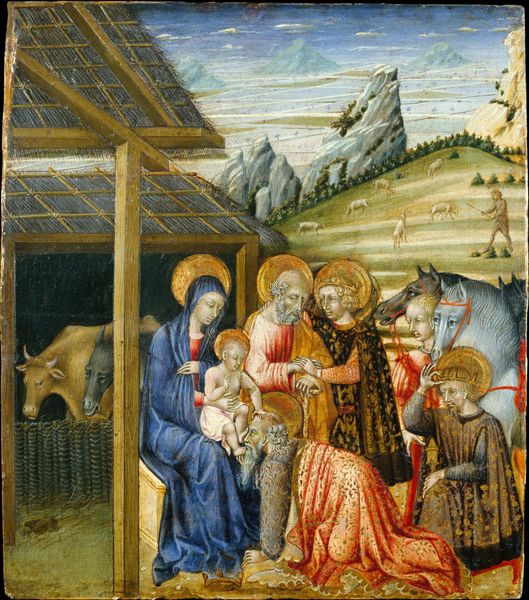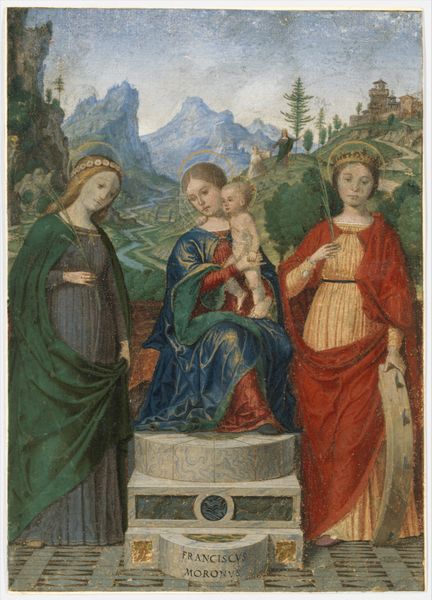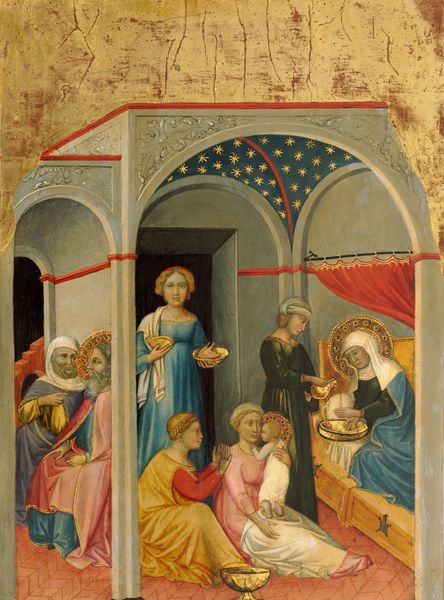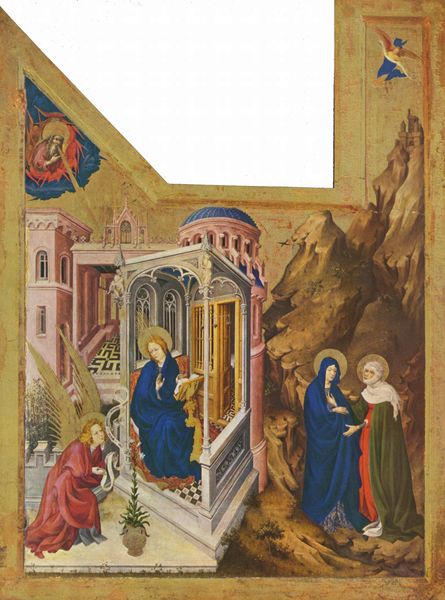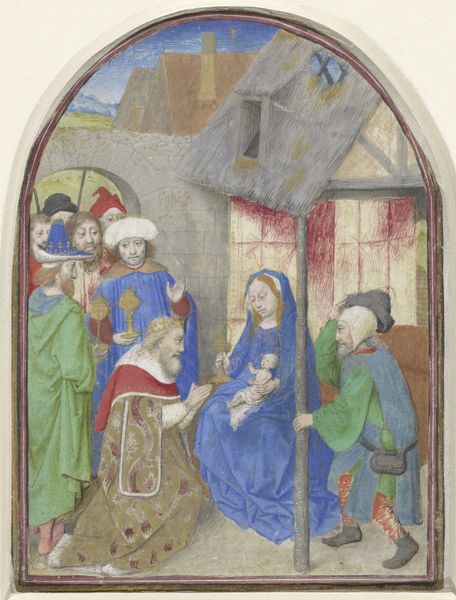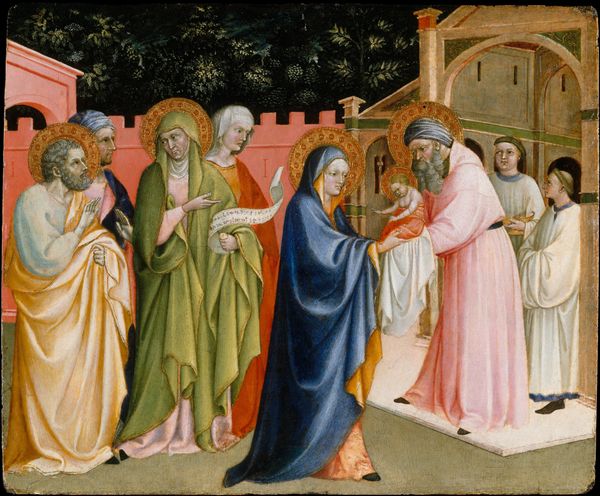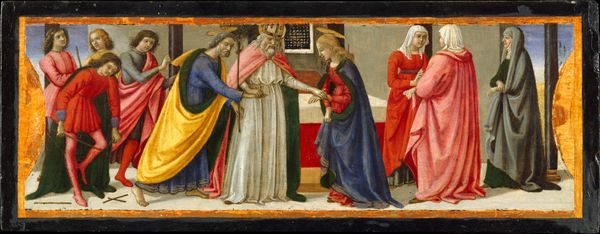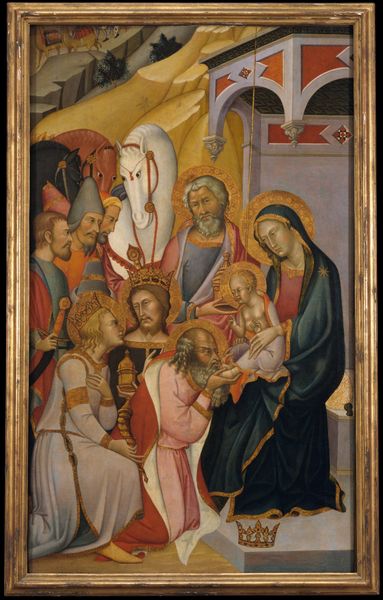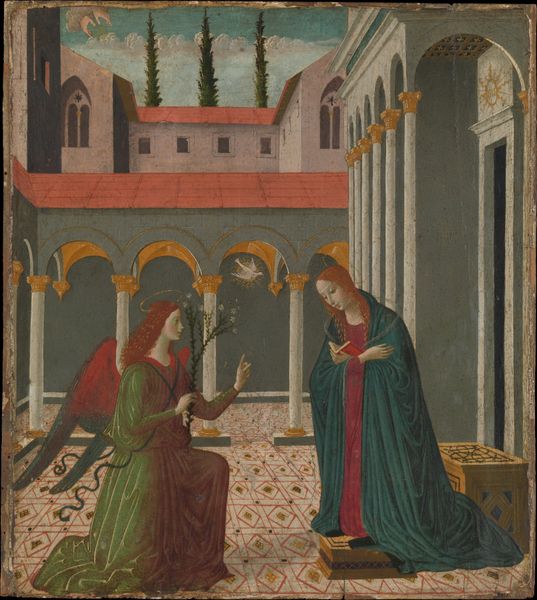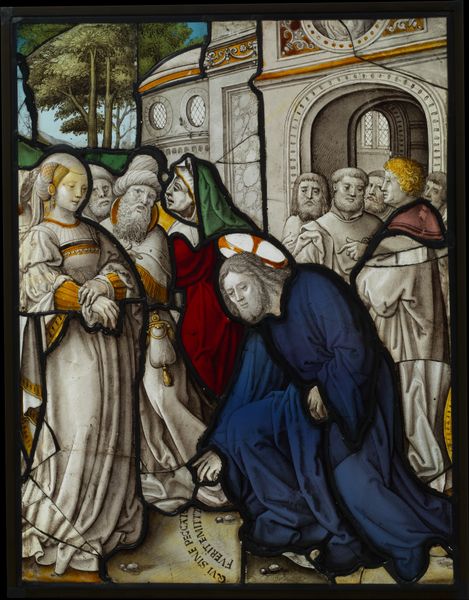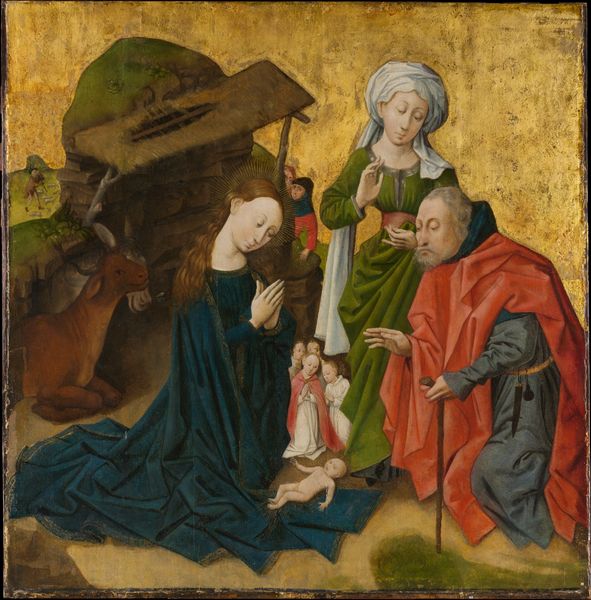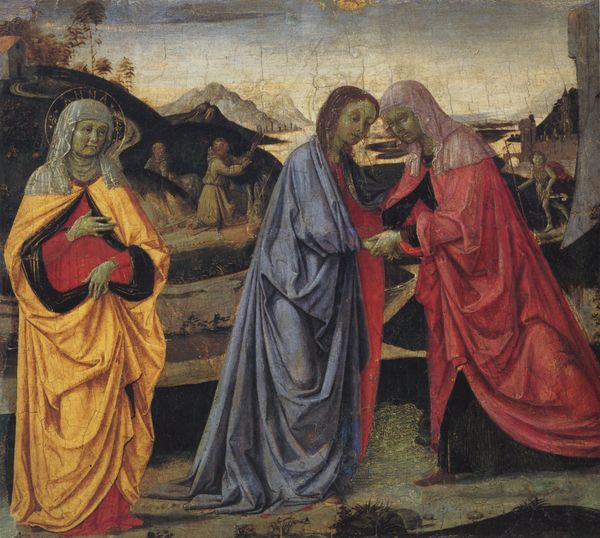
drawing, fresco, watercolor, ink, indian-ink
#
drawing
#
16_19th-century
#
narrative-art
#
landscape
#
figuration
#
fresco
#
watercolor
#
ink
#
indian-ink
#
romanticism
#
watercolour illustration
#
genre-painting
#
history-painting
#
watercolor
Copyright: Public Domain
Editor: We’re looking at “Hagar’s Expulsion” by Philipp Veit, created around 1835 using watercolor, ink, and possibly other drawing media. It’s… interesting. It has a rather stark, almost primitive feel despite the delicate watercolor technique. What strikes you about this work? Curator: It's fascinating to consider this piece from a materialist perspective. We see the hand of the artist so clearly in the visible strokes, the layering of color, the deliberate, if somewhat awkward, figuration. Consider the pigment itself – where did Veit source these colors? What kind of labor was involved in their production? The act of *making* is so present here. Editor: So, you’re drawn to the physical elements, the 'stuff' of the painting? How does that relate to its meaning, or the story it’s telling? Curator: Exactly. We need to think about how materials shape meaning. The relative affordability and accessibility of watercolor, for instance, allowed Veit to create this work. Was he commenting on the socio-economic implications of the narrative through the choice of medium itself? What message did that send in the social context in which he made it? This wouldn’t have been the case had he chosen oil painting or frescos, the materials used to make art were considered valuable, a display of status. Editor: That's an interesting point. I never thought about watercolor as being a kind of social commentary in itself. It’s a simpler, readily available tool compared to pricier oil paints and laborious frescoes. It does makes me see how it might've democratized access to art and expression. Curator: Precisely! And look at the lines themselves – the tentative strokes, the visible process of creation. Are they mirroring a similar process of social or theological shift in Veit's time? Editor: That makes the human drama in the artwork more profound. It is as if the making and the story are connected. Thank you for offering such fresh perspective. Curator: Absolutely, thinking about how material production and making affect our understanding of what we are seeing only makes us ask more relevant questions of any artwork.
Comments
No comments
Be the first to comment and join the conversation on the ultimate creative platform.
